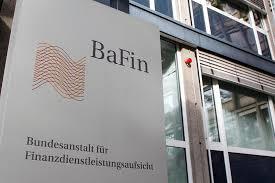A new comprehensive package to find a compromise on the review of Solvency II rules has been tabled by the rapporteur Markus Ferber, member of the European Parliament (MEP) for the European People’s Party (EPP) and the German Christian Social Union (CSU).
The package is in the hands of the rapporteurs of the other parliamentary groups, Ferber said this week, speaking at a conference organised by the German insurance association GDV in Berlin on insurance regulation. He added that he is waiting for a reply.
He expects that next week there will be another round of discussions and that a vote is made in the European Parliament’s Committee on Economic and Monetary Affairs {ECON} the following week, so that dicusssions between the European Parliament, the Council of the European Union and the European Commission can start in September.
Ferber described the relationship with the Commission on the Solvency II review as “very challenging”. “I haven’t experienced anything like this before, working massively against the rapporteur through the service of the Commission. Therefore we took a pause,” he said.
The European Parliament has closely looked at the proposal to review Solvency II by the European Commission, he said.

“I have identified three topics: proportionality, the right level of regulation, and of course also how we can use the adjustments within Solvency II to free up capital to finance the [green] transition,” Ferber noted.
The Commission had proposed to review the principle of proportionality in Solvency II to exempt smaller insurers from regulation, mitigate excessive short-term volatility in insurers’ solvency positions, and improve consistency and coordination of insurance supervision across the EU, among other things.
With the “right level of regulation” Ferber described the possibility for the European Parliament to take a political decision on regulatory technical standards relating to Solvency II.
“We should find another form of cohabitation between EIOPA that sets up technical standards, the EU Commission, and the lawmakers. Therefore, I have proposed to translate aspects like calculation of risk-free yield curve, volatility adjustments, requirements for long-term investments from the delegated regulation into the text of the directive because I think [those] are political questions,” the MEP added.
On sustainability, the Commission took into account a separate opinion from the European Insurance and Occupational Pensions Authority (EIOPA), proposing to amend risk management requirements for insurers and reinsurers by adding an obligation to conduct long-term climate scenario analysis.
According to the MEP, the Commission showed little ambition with regard to sustainability to support the transition to a greener economy through long-term investments, adding that the regulatory framework might not be the only right tool to achieve climate goals.
Transition plans
German insurance association GDV has a critical view of plans to anchor transition plans in the European insurance supervisory system under Solvency II, should that happen, it said.
The reporting on such plans, with companies showing their roadmap to climate neutrality, is anchored to the Corporate Sustainable Reporting Directive (CSRD), which applies to all industries, it said.
“Transition plans make sense. However, they only work if they are applied equally to all sectors – and are consequently regulated across sectors,” said GDV’s chief executive officer Jörg Asmussen intervening at the conference this week.
According to GDV, ESG reporting obligations would apply, within the principle of proportionality, to all European companies that meet two of three criteria including total assets of more than €20m, net revenues of more than €40m, and having more than 250 employees.
“A medium-sized insurer with regional business would have to fulfill the same reporting requirements as a global corporation,” Asmussen argued. Insurers with fewer than 250 employees should therefore be allowed to use simplified reporting standards.
EIOPA believes that Pillar I of Solvency II, setting quantitative requirements on, for example, assets and liabilities valuation and capital requirements, is the right place to deal with climate risks that are “material and relevant”, impacting the insurance industry, chair Petra Hielkema said.
“It has to be done evidence-based, data-driven. This is a step by step approach, risk-based. We will do this if, and only if, the risks that we identify [are] on the basis of evidence, and data,” she added.
EIOPA is now discussing the methodology to assess risks that could (or not) be included in the Solvency II review, Hielkema said.
NGOs Urgewald, ShareAction and Insure Our Future are meanwhile calling on EU policymakers to make sure that insurance legislation is up to date by reflecting the climate-related risks that the industry if facing.
“A lot of insurers are investing in fossil fuels and they [also] take state provisions,” said Anna Lena Samborski, insurance campaigner at Urgewald.
The NGOs have harshly criticised MEP Ferber for watering down climate ambition and delaying the reviewing process. They support mandatory transition plans for all insurers, calling on all members of the ECON committee to approve them.
The NGOs have also launched the one-for-one campaign to set aside funds for potential losses arising from investments in fossil fuels.
“The one-for-one campaign is to cover the risks of stranded assets, we have to stop investing in fossil fuels that will become stranded assets,” Samborski added.
The latest digital edition of IPE’s magazine is now available


















